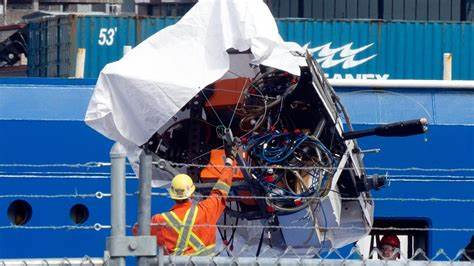The Titan submarine crush is yet another shining example of how all Agile projects end. Complete catastrophe with developers complementing each other on a “great sprint!” using phrases like “we gathered a lot of data from that.” [Featured image is courtesy of zambia24.com] The fact bodies are being stacked like cord wood never dimples their resolve to keep hacking on the fly.
Disruptive Technology is the mantra they chant. We can’t be held to standards because we are disrupting an entire industry. No, you are just hacking on the fly. Management likes it because it lets them commit pre-Enron accounting fraud and you like never being held accountable.
Standards exist for a reason
Yes children, you have to eat your vegetables, you can’t just have desert and junk food.
Engineering means “Do it right the first time”
Engineering does not mean “Keep hacking at it until something works”
That’s why we have SDLC, Engineering standards, and in the case of submarines and many other vehicles transporting human life, laws. That’s why every court in the world is going to tell the company they can wipe their ass with those “Hold Harmless Releases” they had everybody sign. Had you followed actual engineering principals as well as the regulations for testing submarines like the navy uses, we wouldn’t be having this conversation.
Testing matters and it cannot be automated

You can read a bit about the crush depth testing Titan should have went through here. What is unforgivable is the fact they new exactly how deep the ocean floor was. That tiny sub should have been dropped down on tether many times unmanned. Small subs like that always need lift points. We need international regulations demanding at full Titanic floor depth for any sub to be used in this market. Subs must be tether dropped down and spend 8+ hours on the floor, repeatedly, prior to the first human occupants.
How do you bond carbon fiber to titanium?
You can weld steel to titanium according to the welding sites. Obviously it cannot be done with a sub $100 Arc welder you bought from Sears, but it can be done.
According to professional literature, titanium may welded to steel using explosives.
theweldguru.com
Read the article for all of the different ways.
When you search for how to bond carbon fiber to titanium you find what ordinary people call glue, and some different methods of riveting. Neither of these make me feel all warm and fuzzy about how strong an air tight seam would be at 12,500 feet of depth.
How many bodies before governments step in?
Agile is not engineering!
I wrote a book about it years ago. You see Web companies like Facebook and Google champion this hacking on the fly development method for everything. They didn’t care about whose identity got stolen, what kind of bots and viruses they let into your computer, or your general well being.
Then we had Enron. That gave us SOX. Under SOX you cannot book software as an asset until you can prove it works. Enter Agile. Automated unit tests of Agile let you prove your software works because they don’t actually test it. With no SDLC and thousands of items “in the backlog,” you don’t have a working system.
